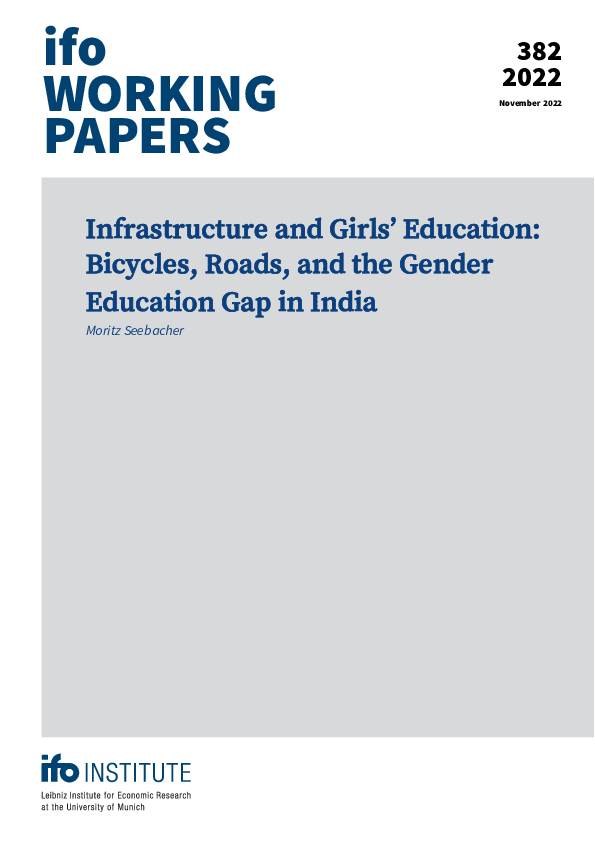Infrastructure and Girls’ Education: Bicycles, Roads, and the Gender Education Gap in India
ifo Institute, Munich, 2022
ifo Working Paper No. 382

How can infrastructure help to reduce the gender education gap in developing countries? In this paper, I analyze the complementarity of all-weather roads and a bicycle program in Bihar, India, which aimed to increase girls’ secondary school enrollment rate. Using Indian household survey data combined with a quadrupledifference estimation strategy, I find that the program’s main beneficiaries are girls living at least 3km away from secondary schools whose villages are connected with all-weather roads. Their net secondary school enrollment rate increased by over 87 percent, reducing the respective gender education gap by around 45 percent. I find no effect for girls living in villages without an all-weather road, suggesting that allweather roads are not just complementary to the bicycle program but a precondition for its success. The findings highlight the importance of well-functioning infrastructure for the accessibility of secondary schools and the empowering of girls in India.